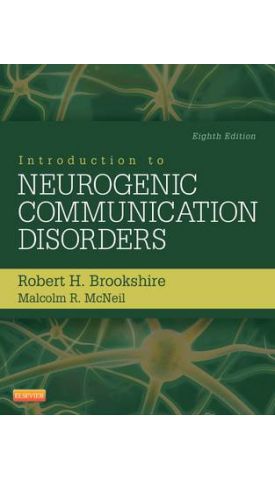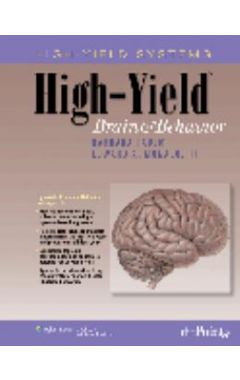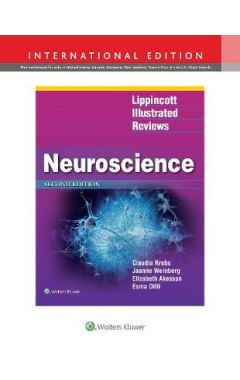אנו משתמשים ב-Cookies כדי לשפר את החוויה שלך. כדי לקיים ההנחיה החדשה של e-Privacy, עלינו לבקש את הסכמתך להגדיר את ה-Cookies. קבלת מידע נוסף.
Introduction to Neurogenic Communication Disorders
Get the tools you need to evaluate, diagnose, and treat patients with neurogenic communication disorders! Introduction to Neurogenic Communication Disorders, 8th Edition provides a solid foundation in the neurology of communication, as well as the causes, symptoms, diagnosis, assessment, and management of commonly encountered neurogenic communication disorders in adults. A concise, evidence-based approach shows how to measure and treat abnormalities such as aphasia, dysarthria, right-hemisphere syndrome, and traumatic brain injury syndrome. This edition is updated with new coverage of laboratory tests, blast-related injuries to the head, and medications for dementia. Created by neurogenic communication disorders educator Robert H. Brookshire and continued by Malcolm R. McNeil, this bestselling text will enhance your skills in the rehabilitation of clients with neurogenic communication disorders.
New to this edition
- NEW content on closed-head injuries as a consequence of blast injury is included in the Traumatic Brain Injury chapter, addressing a pathophysiology often found in Iraq and Afghanistan war veterans.
- UPDATED content includes new information on medications for treatment of persons with dementia, the latest laboratory tests for neurologic assessment, and the most current cognitive rehabilitation approaches.
- NEW! More Thought questions in each chapter help you apply concepts to clinical situations.
- Additional content on evidence-based practice includes systematic reviews and meta-analyses relating to the efficacy and effectiveness of specific treatment approaches.
- Additional graphics, clinical photographs, and tables depict key information and concepts.
Key Features
- A clear, concise approach makes complex material easy to follow and understand.
- Clinical vignettes show how to apply principles to practice and illustrate how patients are evaluated and treated.
- Thought questions at the end of each chapter are based on realistic scenarios and challenge you to assess your understanding, think critically, and apply information to clinical situations. Suggested answers are included in the appendix.
- Clinically relevant sidebars include related facts, information, and tips for recall or therapy.
- More than 200 photographs and images include anatomic illustrations, scans using various brain imaging techniques, and examples of assessment tests.
- Evidence-based practice is reinforced by the use of scientific, evidence-based rationales to support the effectiveness of treatment approaches.
- Student-friendly features enhance learning with chapter outlines, critical thinking exercises, medical protocols, sample paperwork, patient transcripts, commonly used medical abbreviations, and a glossary with definitions of key vocabulary.
- General Concepts summary points highlight the most important material in each chapter.
| מהדורה | 8 |
|---|---|
| עמודים / Pages | 512 |
| פורמט | Paperback |
| הוצאה לאור | Elsevier |
| תאריך יציאה לאור | 4 בנוב׳ 2014 |
| תוכן עניינים | 1. Neuroanatomy and Neuropathology
2. Neurologic Assessment 3. Assessing Adults Who Have Neurogenic Cognitive-Communicative Impairments 4. Assessing Cognition 5. Assessing Language 6. Assessing Functional Communication and Quality of Life 7. The Context for Treatment of Cognitive-Communicative Disorders 8. Neuroanatomic Explanations of Aphasia and Related Disorders 9. Treatment of Aphasia and Related Disorders 10. Right Hemisphere Syndrome 11. Traumatic Brain Injury 12. Dementia 13. Motor Speech Disorders Medical Abbreviations Answers to Thought Questions Bibliography |
| Author | Robert H. Brookshire & Malcolm R. McNeil |








Login and Registration Form